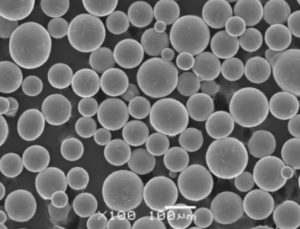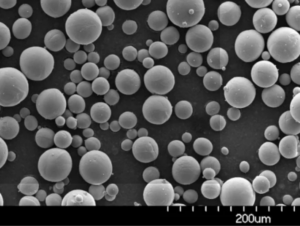について プラズマ回転電極プロセスPREPと略されることも多いこのプロセスは、高品質の金属粉末を製造するための魅力的で高度に専門化された方法である。回転電極とプラズマアークを伴うこのプロセスは、積層造形、航空宇宙、生物医学インプラントなど、さまざまな高性能アプリケーションに不可欠な粉末を作り出す。このプロセスの詳細について、そのニュアンスや用途、製造できる金属粉末の種類を探ってみよう。
プラズマ回転電極プロセスの概要
プラズマ回転電極プロセス(PREP)は、高純度で粒度分布が均一な球状金属粉末を製造するための最先端技術です。このプロセスでは、プラズマアークを使って回転電極を溶かし、液滴を形成して微粉末に凝固させます。PREPの概要は以下の通り:
- テクニック:プラズマアークによる回転電極の溶融
- 結果:高品質の球状金属粉
- 用途:積層造形、航空宇宙、生物医学インプラントなど
- メリット:高純度、均一なサイズ、優れた粉体特性
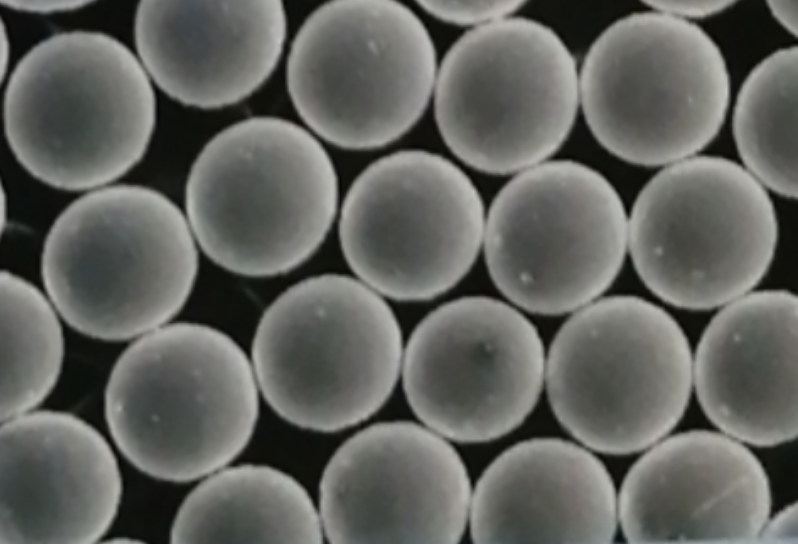
PREPで製造される金属粉末の種類
1.チタン合金 (Ti-6Al-4V)
説明:Ti-6Al-4Vは、優れた強度対重量比と耐食性で知られるチタン合金です。航空宇宙、医療機器、高性能エンジニアリング用途に広く使用されています。
2.ステンレススチール(316L)
説明:316Lステンレス鋼は、高耐食性と優れた機械的特性を持つオーステナイト系ステンレス鋼です。それは、一般的に海洋環境、医療機器、食品加工機器に使用されています。
3.インコネル718
説明:インコネル718は、高温での高強度と耐食性で知られるニッケルクロム合金である。ガスタービン、航空宇宙、化学処理に広く使用されている。
4.アルミニウム合金 (AlSi10Mg)
説明:AlSi10Mgはアルミニウム-シリコン-マグネシウム合金で、鋳造性に優れ、熱伝導率が高い。自動車や航空宇宙用途によく使用されます。
5.コバルトクロム合金(CoCrMo)
説明:CoCrMoは、耐摩耗性と生体適合性で知られるコバルト-クロム-モリブデン合金である。主に医療用インプラントや歯科補綴物に使用される。
6.銅合金(CuCrZr)
説明:CuCrZrは銅にクロムとジルコニウムを添加した合金で、高強度で優れた熱伝導性と電気伝導性を持つ。電気および熱管理用途に使用される。
7.工具鋼(H13)
説明:H13は高い靭性と耐熱疲労性を持つクロムモリブデン熱間工具鋼です。ダイカストや押出金型に使用されます。
8.マルエージング鋼 (18Ni300)
説明:18Ni300は超高強度と靭性で知られるマルエージング鋼です。航空宇宙部品、工具、高性能エンジニアリング部品に使用されます。
9.タンタル
説明:タンタルは高い耐食性と優れた生体適合性を持つレアメタルである。医療用インプラント、電子機器、化学処理装置などに使用されている。
10.ニッケル合金(ハステロイX)
説明:ハステロイXは、優れた耐酸化性と高温強度を持つニッケル基超合金です。ガスタービンエンジン、化学処理、工業用加熱などに使用される。
PREPにおける金属粉末の組成
PREPで製造される金属粉末の組成は、特定の用途でその性能を発揮するために極めて重要です。各金属粉末に含まれる主な元素の内訳は以下の通りです:
| 金属粉 | 構成 |
|---|---|
| Ti-6Al-4V | Ti(90%)、Al(6%)、V(4) |
| 316L | Fe(65%)、Cr(17%)、Ni(12%)、Mo(2.5%)、Mn(2) |
| Inconel 718 | Ni (50-55%)、Cr (17-21%)、Fe (バランス)、Nb (4.75-5.5%)、Mo (2.8-3.3%) |
| AlSi10Mg | Al (90-92%)、Si (9-10%)、Mg (0.3-0.5%) |
| CoCrMo | Co(60~65%)、Cr(27~30%)、Mo(5~7) |
| CuCrZr | Cu (97-99%)、Cr (0.5-1.2%)、Zr (0.03-0.3%) |
| H13 | Fe(バランス)、Cr(5%)、Mo(1.3%)、Si(1) |
| 18Ni300 | Fe(バランス)、Ni(18~19%)、Co(8~9%)、Mo(4.5~5) |
| タンタル | Ta (99.95%以上) |
| Hastelloy X | Ni(47~50%)、Cr(20~23%)、Fe(18~20%)、Mo(8~10) |
PREP金属粉末の特徴
により製造された金属粉末の特性は、以下の通りである。 プラズマ回転電極プロセス は、さまざまな業界で高い人気を誇っている。これらの特徴を検証してみよう:
| 特徴 | 説明 |
|---|---|
| 粒子サイズ | 粒度分布の狭い微細な球状粒子 |
| 純度 | コンタミネーションを最小限に抑えた高純度 |
| 形態学 | 均一なフローとパッキングのための均一な球形状 |
| 密度 | 粉末床溶融やその他の積層造形技術に適した高い充填密度 |
| 酸化 | 製造時の不活性ガス環境による低酸化レベル |
| 流動性 | 3Dプリンティングにおける均一なレイヤリングのための優れた流動特性 |


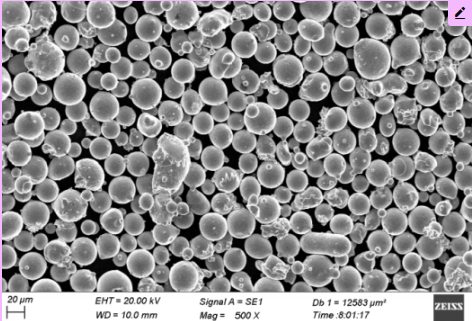
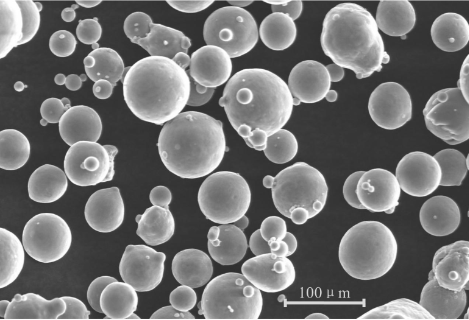
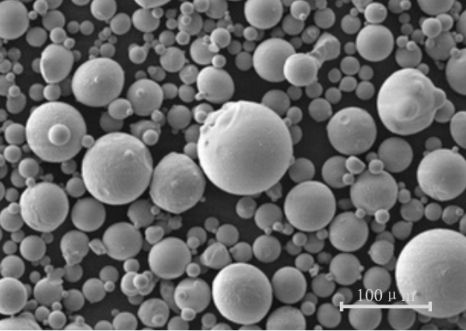

PREP金属粉末の用途
PREPで製造された金属粉末は、その優れた品質と特性により、幅広い用途に使用されています。主な用途の一部をご紹介します:
| 申し込み | 金属粉 | 説明 |
|---|---|---|
| 付加製造 | Ti-6Al-4V、316L、インコネル718 | 複雑で高性能な部品の3Dプリントに使用 |
| 航空宇宙部品 | Ti-6Al-4V、インコネル718、H13 | 航空機・宇宙船用高強度軽量部品 |
| 医療用インプラント | CoCrMo、Ti-6Al-4V、タンタル | インプラントと補綴物のための生体適合性材料 |
| 自動車部品 | AlSi10Mg、316L | 自動車用軽量高強度部品 |
| 導体 | CuCrZr | 電気および熱用途の高導電性材料 |
| 金型 | H13、18Ni300 | 工具および金型製造用の耐久性のある材料 |
| 化学処理 | ハステロイX、インコネル718 | 過酷な化学環境に対応する耐腐食性素材 |
PREP金属粉末の仕様と規格
PREPで製造される金属粉末は、その品質と様々な用途への適合性を保証するために、特定の規格と仕様を満たさなければなりません。以下は代表的な仕様です:
| 金属粉 | 粒子径範囲 | 純度 | 規格 |
|---|---|---|---|
| Ti-6Al-4V | 15-45 µm | 99.5%以上 | アストマ F2924、アムス 4998 |
| 316L | 10-50 µm | 99.9%分 | ASM276、AMS5648 |
| Inconel 718 | 20-60 µm | 99.0%分 | AMS5662、ASM B637 |
| AlSi10Mg | 20-60 µm | 99.8%分 | en 1706, astm b247 |
| CoCrMo | 15-45 µm | 99.0%分 | ASTM F75、ISO 5832-4 |
| CuCrZr | 10-50 µm | 99.9%分 | ASMB224、AMS4534 |
| H13 | 20-60 µm | 99.5%以上 | アストマムA681、アムス6408 |
| 18Ni300 | 15-45 µm | 99.0%分 | アストマムA579、アムス6514 |
| タンタル | 10-40 µm | 99.95%以上 | ASMB521、AMS7847 |
| Hastelloy X | 20-60 µm | 99.0%分 | AMS 5754、ASM B435 |
PREP金属粉末のサプライヤーと価格
PREP金属粉末の市場には様々なサプライヤーが存在し、それぞれが様々なグレードとサイズを異なる価格帯で提供している。以下はその一例である。
概要
| サプライヤー | 金属粉 | 価格帯(kgあたり) |
|---|---|---|
| AP&C(GEアディティブ) | Ti-6Al-4V、316L、インコネル718 | $300 – $700 |
| ヘガネスAB | AlSi10Mg、CoCrMo、H13 | $200 – $600 |
| サンドビック・オスプレイ | CuCrZr、18Ni300、ハステロイX | $250 – $800 |
| プラクセア・サーフェス・テクノロジー | Ti-6Al-4V、インコネル718、タンタル | $400 – $900 |
| カーペンター・テクノロジー | 316L、H13、18Ni300 | $250 – $700 |
PREPメタルパウダーの長所と短所を比較する
どんな素材や製法にも長所と限界がある。PREPで製造される金属粉末の長所と短所を比較してみよう:
| アスペクト | メリット | 制限事項 |
|---|---|---|
| 粒子の形態学 | 球状粒子が流動性と充填密度を高める | 複雑でコストのかかるプロセス |
| 純度 | コンタミネーションを最小限に抑えた高純度 | 高品質の原材料が必要 |
| サイズ分布 | 狭いサイズ分布で均一性を確保 | 特定の粒子径範囲に限定 |
| 機械的特性 | 高性能用途に適した優れた機械的特性 | 素材によっては後処理が必要な場合があります。 |
| 生産コスト | 高性能アプリケーションのためのコスト効率 | 初期設定および運用コストが高い |
| 適用範囲 | さまざまな業種に対応 | すべての金属と合金がPREPに適しているわけではない |
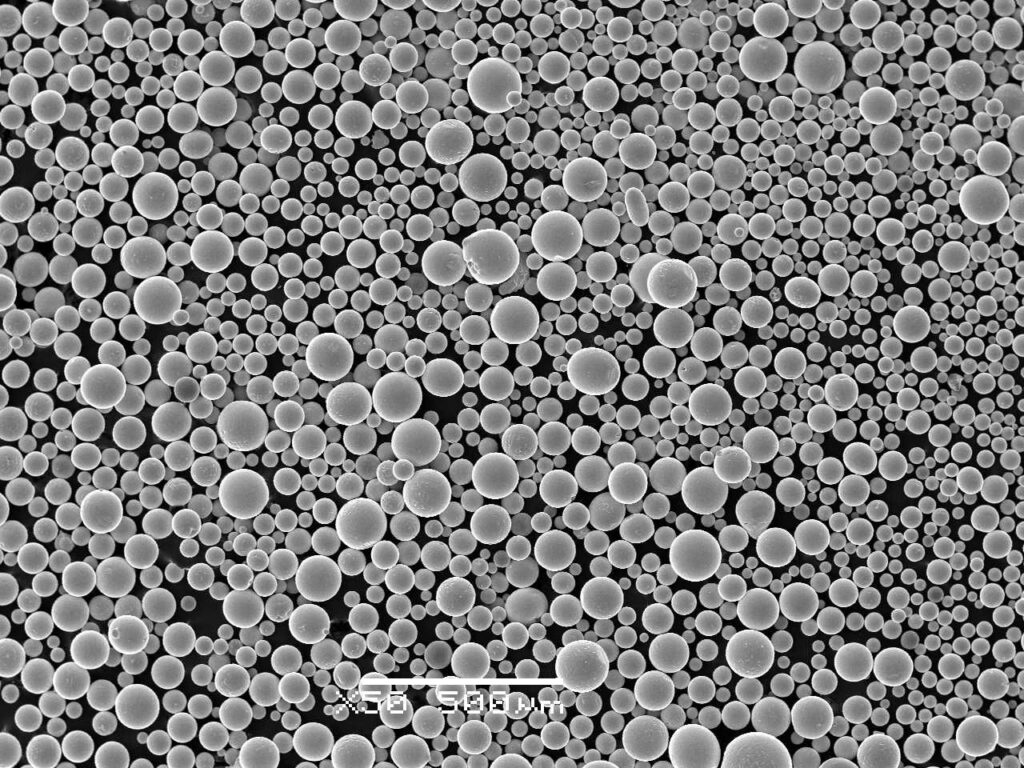
よくある質問
1.何が問題なのか? プラズマ回転電極プロセス (PREP)?
回答:プラズマ回転電極法(PREP)は、回転電極をプラズマアークで溶融し、高品質の球状金属粉末を製造する方法です。
2.PREP金属粉末の主な用途は?
回答:PREP金属粉末は、積層造形、航空宇宙、医療用インプラント、自動車部品、導電体、金型、化学加工に使用されています。
3.金属粉末の製造にPREPを使用する利点は何ですか?
回答:PREPは、高純度、均一な粒子径、優れた流動性、優れた機械的特性などの利点を提供します。
4.PREPで処理できる金属の種類は?
回答:PREPは、チタン合金、ステンレス鋼、ニッケル合金、アルミニウム合金、コバルトクロム合金、銅合金、工具鋼、マルエージング鋼、タンタルなど、さまざまな金属や合金の加工が可能です。
5.PREP金属粉末のコストは、他の粉末製造方法と比べてどうですか?
回答:PREPの初期設定と運転コストは高いが、得られる製品の品質と特性が優れているため、高性能粉末の製造には費用対効果が高い。
6.プラズマ回転電極プロセスには制限がありますか?
回答:はい、制約としては、プロセスの複雑さとコスト、高品質の原料の必要性、特定の粒度範囲への制限があります。
7.PREP金属粉末は積層造形にどのように役立つのか?
回答:PREP金属粉末は、高純度で優れた流動性を持つ微細な球状粒子を提供することで、積層造形に利益をもたらし、最終的なプリント部品の優れた機械的特性を実現します。
8.すべての金属と合金をPREPで製造できますか?
回答:すべての金属や合金がPREPに適しているわけではない。このプロセスは、溶融凝固時に微細な球状粉末を形成できる材料に最も効果的です。
9.PREP金属粉末の一般的な規格や仕様にはどのようなものがありますか?
回答:PREP金属粉末の一般的な規格と仕様には、ASTM、AMS、ISO規格があり、様々な用途の粉末の品質と一貫性を保証しています。
10.PREPの金属粉はどこで買えますか?
回答:PREP金属粉末は、AP&C(GEアディティブ)、Höganäs AB、Sandvik Osprey、Praxair Surface Technologies、Carpenter Technologyなどのサプライヤーから購入できる。
結論として、プラズマ回転電極プロセスは、高品質の金属粉末の製造に不可欠な技術である。これらの粉末は、航空宇宙から生物医学インプラントに至るまで、様々な高性能アプリケーションに不可欠である。このプロセスの複雑さ、用途、そして生産される特定の金属粉を理解することで、現代の製造とエンジニアリングに大きな影響を与えることを理解することができます。あなたが製造業者であれ、エンジニアであれ、あるいは単に先端材料に興味があるだけであれ、プラズマ回転電極プロセスは、材料科学と技術の未来を垣間見る興味深い機会を提供してくれる。
